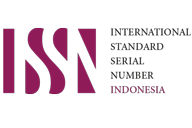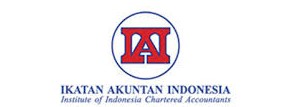Tingkat Materialitas Berdasarkan Kepentingan Stakeholder pada Penyajian Laporan Keberlanjutan
Abstract
This study aims to investigate the level of materiality based on stakeholder importance in sustainability reports. This research will assess whether companies involve stakeholders in the materiality analysis process, what engagement methods are used, what are the most material topics according to stakeholders, and whether the sustainability report implies materiality topics in accordance with stakeholder needs in the presentation of the sustainability report. The population of this study are companies participating in the Asia Sustainability Reporting Rating (ASRRAT) 2020-2022. By using a sampling method, namely purposive sampling, 19 companies with 57 sustainability reports were obtained. Using the content analysis research method with a qualitative approach, this study found that the stakeholders most frequently involved in reporting are customers, employees, communities, governments, and shareholders with Focus Discussion Group (FGD), survey, and questionnaire engagement methods. Meanwhile, the most material topics according to stakeholders are economic performance topics, indirect economic impacts, and anti-corruption topics. On the environmental aspect, energy, water, biodiversity, and emission topics. In the social aspect, employment, occupational health and safety (OHS), training and education, and diversity and equality topics. Overall, the content of the sustainability report is in accordance with material topics according to stakeholder importance. But the company has not presented information on the disclosure of material topics in a complete and detailed way.
References
Beske, F., Haustein, E., & Lorson, P. C. (2020). Materiality analysis in sustainability and integrated reports. Sustainability Accounting, Management and Policy Journal, 11(1), 162–186. https://doi.org/10.1108/SAMPJ-12-2018-0343
Burhan Bungin. (2008). Penelitian Kualitatif: Komunikasi, Ekonomi, Kebijakan Publik, dan Ilmu Sosial Lainnya. Kencana.
Calabrese, A., Costa, R., Ghiron, N. L., & Menichini, T. (2017). MATERIALITY ANALYSIS IN SUSTAINABILITY REPORTING: A METHOD FOR MAKING IT WORK IN PRACTICE. European Journal of Sustainable Development, 6(3). https://doi.org/10.14207/ejsd.2017.v6n3p439
Calabrese, A., Costa, R., & Rosati, F. (2015). A feedback-based model for CSR assessment and materiality analysis. Accounting Forum, 39(4), 312–327. https://doi.org/10.1016/j.accfor.2015.06.002
Chariri A, & Ghozali I. (2007). Teori Akuntansi. Badan Penerbit Universitas Diponegoro.
Geerts, M., & Dooms, M. (2020). Sustainability reporting for inland port managing bodies: A stakeholder-based view on materiality. Sustainability (Switzerland), 12(5). https://doi.org/10.3390/su12051726
GRI Standard. (2016). bahasa-indonesia-gri-101-foundation-2016.
Guix, M., Bonilla-Priego, M. J., & Font, X. (2018). The process of sustainability reporting in international hotel groups: an analysis of stakeholder inclusiveness, materiality and responsiveness. Journal of Sustainable Tourism, 26(7), 1063–1084. https://doi.org/10.1080/09669582.2017.1410164
Guix, M., Font, X., & Bonilla-Priego, M. J. (2019). Materiality: stakeholder accountability choices in hotels’ sustainability reports. International Journal of Contemporary Hospitality Management, 31(6), 2321–2338. https://doi.org/10.1108/IJCHM-05-2018-0366
Machado, B. A. A., Dias, L. C. P., & Fonseca, A. (2021). Transparency of materiality analysis in GRI-based sustainability reports. Corporate Social Responsibility and Environmental Management, 28(2), 570–580. https://doi.org/10.1002/csr.2066
Morhardt, J. E., Baird, S., & Freeman, K. (2002). Scoring corporate environmental and sustainability reports using GRI 2000, ISO 14031 and other criteria. Corporate Social Responsibility and Environmental Management, 9(4), 215–233. https://doi.org/10.1002/csr.26
Nurzi Sebrina, Salma Taqwa, & Mayar Afriyenti. (2022). Laporan Berkelanjutan: Menakar Kualitas Laporan Berkelanjutan Dalam Mendukung Pembangunan Berkelanjutan. SUKABINA PRESS.
Pemerintah Republik Indonesia. (2017). Peraturan Otoritas Jasa Keuangan Nomor 51/POJK.03/2017 Tentang Penerapan Keuangan Berkelanjutan Bagi Lembaga Jasa Keuangan, Emiten, dan Perusahaan Publik.
Pemerintah Republik Indonesia. (2021). Surat Edaran Otoritas Jasa Keuangan Republik Indonesia Nomor 16/SEOJK.04/2021 Tentang Bentuk dan Isi Laporan Tahunan Emiten atau Perusahaan Publik. 1.
Ramadhini Trianaputri, A., & Djusman Djakman, C. (2019). QUALITY OF SUSTAINABILITY DISCLOSURE AMONG THE ASEAN-5 COUNTRIES AND THE ROLE OF STAKEHOLDERS. Jurnal Akuntansi dan Keuangan Indonesia, 16(2), 180–205. https://doi.org/10.21002/jaki.2019.10
Sebrina, N., Taqwa, S., Afriyenti, M., & Septiari, D. (2023). Analysis of sustainability reporting quality and corporate social responsibility on companies listed on the Indonesia stock exchange. Cogent Business and Management, 10(1). https://doi.org/10.1080/23311975.2022.2157975
Sugiyono. (2005). Memahami Penelitian Kualitatif. ALFABETA.
Sugiyono. (2022). Metode Penelitian Kuantitatif, Kualitatif, dan R&D (2 ed.). ALFABETA.
Torelli, R., Balluchi, F., & Furlotti, K. (2020). The materiality assessment and stakeholder engagement: A content analysis of sustainability reports. Corporate Social Responsibility and Environmental Management, 27(2), 470–484. https://doi.org/10.1002/csr.1813







.png)
.png)
